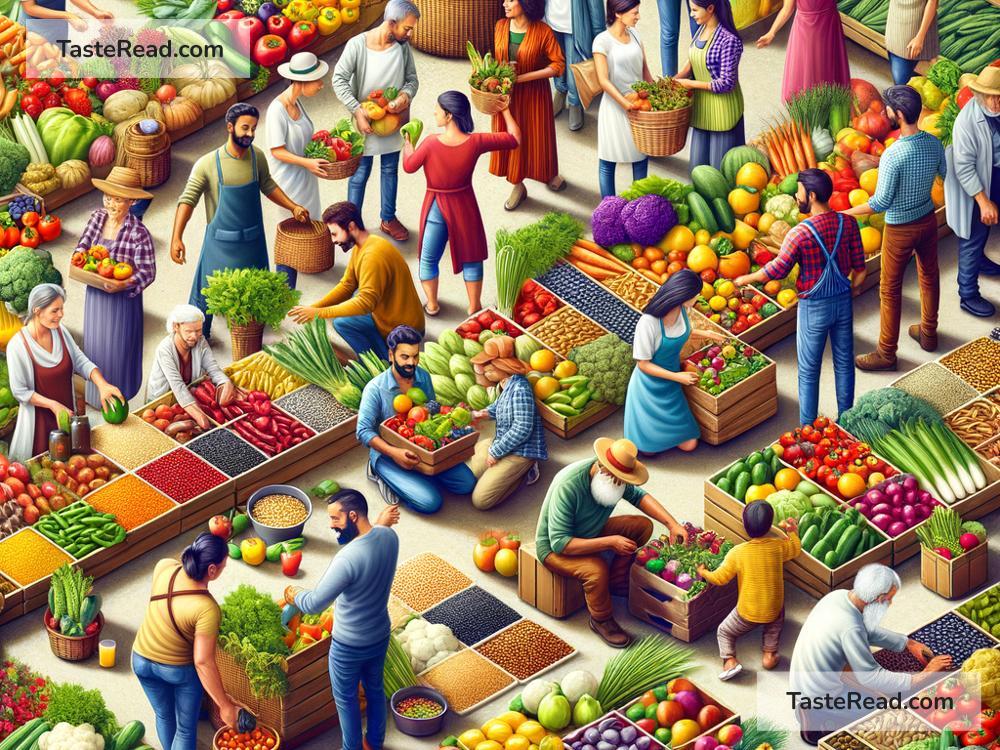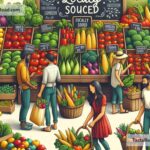The Impact of Food Systems on Nutritional Quality
Food is one of life’s essentials. It fuels our bodies, helps us grow, and keeps us healthy. But have you ever wondered how the journey from farm to plate affects the nutritional value of what we eat? The way food is grown, processed, distributed, and consumed—known as the “food system”—plays a big role in shaping the nutrients available to us. In this article, we’ll explore how food systems impact nutritional quality and what we can do to make better choices.
What Are Food Systems?
A food system includes all the steps involved in getting food to people:
- Production: Growing fruits, vegetables, grains, and raising animals for meat and dairy.
- Processing: Turning raw ingredients into packaged products like bread, canned vegetables, or frozen dinners.
- Distribution: Shipping food to stores, markets, and restaurants.
- Consumption: People buying, cooking, and eating food.
While food systems aim to provide enough food for everyone, they don’t always prioritize nutrition. Large-scale farming, mass production, and the demand for convenience have influenced the types of food we eat—and not always in a good way.
Agricultural Practices and Nutritional Quality
How food is grown matters a lot when it comes to nutrients. For example:
- Soil Health: Plants get nutrients from soil. If the soil is healthy, crops like spinach and carrots will be rich in vitamins and minerals. But intensive farming practices can deplete soil nutrients over time. This leads to lower nutritional quality in crops.
- Pesticides and Chemicals: Farmers often use chemicals to protect crops from pests and diseases. While this can help produce more food, excessive use can affect the health of the soil and plants, sometimes reducing nutrient levels.
- Crop Variety: Many farms focus on growing just a few types of crops, such as wheat or corn, because they’re easy to produce and profitable. But these crops may not provide the range of nutrients we need. On the other hand, growing a variety of fruits, vegetables, and legumes can improve diets and overall nutrition.
Food Processing and Loss of Nutrients
Many foods go through processing before they reach grocery store shelves. While processing makes food more convenient and extends its shelf life, it can also strip away important nutrients.
For example:
– Refined Grains: Whole grains like brown rice and whole wheat are full of fiber, vitamins, and minerals. But refining grains removes the outer layer, which contains many of these nutrients. That’s why white bread and white rice are less nutritious than their whole-grain counterparts.
– Preservatives and Additives: Processed foods often contain artificial flavors, colors, and preservatives. While these additives make food look and taste better, they don’t add nutritional value. In some cases, they can contribute to health problems like obesity or high blood pressure.
– Sugar and Salt: Many packaged foods have a lot of added sugar and salt to improve flavor. While they might taste delicious, eating too much sugar or salt can lead to tooth decay, diabetes, and heart disease.
Food Distribution and Access
Food systems also affect how easily people can access healthy options.
- Global Supply Chains: Many fruits and vegetables travel thousands of miles to reach grocery stores. This transportation takes time, and fresh produce often loses nutrients along the way. For instance, spinach starts losing its Vitamin C as soon as it’s harvested. By the time it reaches your plate, it may be less nutritious.
- Availability of Healthy Foods: In some areas, especially low-income neighborhoods and rural regions, access to fresh and healthy food is limited. Instead, people may rely on cheaper, processed foods, which are usually high in calories but low in nutrients. This imbalance can lead to malnutrition and obesity at the same time—a phenomenon known as the “double burden of malnutrition.”
Consumption and Lifestyle Choices
What we choose to eat is often influenced by the food system. Marketing, advertising, and the availability of fast food make it easier to pick less nutritious options. For example, a bag of chips might be more convenient than washing and chopping carrots.
However, the rise of consumer awareness is encouraging people to make healthier choices. Many shoppers now look for fresh, local, and organic products, which can improve nutrition and support sustainable food systems.
Moving Toward Healthier Food Systems
To improve nutritional quality, we need to reshape food systems. Here’s how:
1. Support Local Farming: Buying locally grown produce reduces the need for long transportation times and ensures fresher, more nutritious food.
2. Choose Whole and Fresh Foods: Opt for whole grains, fresh fruits, and vegetables instead of processed snacks and meals.
3. Educate and Advocate: Teach children and communities about healthy eating habits and the impact of food systems. Demand policies that prioritize nutrition and sustainability.
4. Reduce Food Waste: Eating leftovers and planning meals can help reduce waste and protect resources, which is good for both nutrition and the planet.
Final Thoughts
Food systems play a big role in determining the quality of what we eat. From farming to processing, distribution, and consumption, each step influences the nutrients that end up on our plates. By understanding how food systems work, we can make smarter choices for ourselves and our families. We can also push for changes that create healthier, more sustainable food systems for everyone. After all, nutritious food is not just about individual health—it’s about the well-being of entire communities and the planet.
So next time you shop for groceries or sit down for a meal, consider how the food system has shaped what you’re eating—and how your choices can make a difference!


